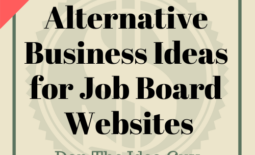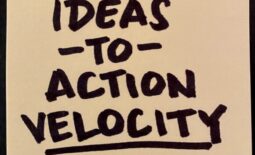Your Company Policy is Handcuffing Creativity
I’ve written multiple articles about how company policies favor the company that wrote them and not-so-much for their customer, but official corporate policies don’t just hobble the ability for a company to earn customer loyalty externally — they are also handcuffing creativity internally.
Is your company policy handcuffing creativity and punishing people who are pushing the envelope?
Most corporate policies are in place to make employees behave and conform, which basically attempts to prevent and discourage employees from thinking outside the box and stepping outside of their comfort zone because they either fear punitive repercussions from their managers and the Human Resources department, or they get beyond the fear and are punished anyway.
Scott Stratten (creator of Unmarketing) just shared an article in his LinkedIn feed about an Ohio Sherwin-Williams paint store that fired part-time employee and Ohio University senior Tony Piloseno for posting videos on TikTok. These weren’t negative posts about his employers, the videos didn’t threaten violence against any individual or political party, and the videos didn’t show the employee doing anything in their private life that might embarrass the company professionally. The videos actually show the employee doing an aspect of their job — mixing paint colors.
The short videos are short snippets and quite engaging. They simply show colors being blended into new shades, sometimes with a creative twist (like adding blueberries as a natural dye). The videos have received hundreds of Shares, hundreds of Comments, and received hundreds of thousands of Likes.
But Sherwin-Williams didn’t give the employee a bonus, a raise, or a contract to do their social media content creation — they gave him a pink slip (not sure if the Pink was more Rosy Outlook, Blushing, or Mellow Coral).
In a world where just keeping up with the latest flavor of social media platforms is a challenge, finding content that actually engages the audience is the golden goose — especially for company brands, services, and products. Mr Piloseno had successfully broken through the clutter and hooked an audience with his TikTok take on paint mixing, and instead of rewarding or congratulating him and strategizing on ways to track sales and monitor business ROI on his efforts, they fired him. The original reason Sherwin-Williams provided was because he’d shot the videos on company time and company equipment and terminated him for gross misconduct. After the story hit Buzzfeed a spokesperson reached out to say they actually fired him after receiving a customer complaint.
I don’t know about you, but whenever I’ve complained about receiving truly horrendous service from an employee at a company I have a hard enough time getting a refund or a discount or an apology (or even a returned phone call!), but Sherwin-Williams fires an employee for a single complaint about a harmless paint mixing video? This seems suspicious. But even if they really did use a complaint from one person as the reason to fire their employee — why not weigh it against the 1.3 MILLION people who liked the work he was doing — and that’s based on response to just one single video he created!
What would happen at your company if something similar to this happened?
- If you ran a restaurant and a kitchen assistant was posting YouTube videos about interesting things that could be cooked in your kitchen, would fire them or promote them?
- If you own a plumbing company and a new apprentice started posting pictures of the strange things they’ve pulled out of clogged drains to an Instagram account, would you reward them or ream them out?
- What if you owned a paper-shredding service and an employee started posting Facebook Live videos where they tried to run crazy things through the paper-shredder to see if they will shred?
Something similar to that last idea put BlendTec blenders on the map — they became THE blender for restaurants and bars (as well as home use) after they started posting videos to YouTube on a channel that asked “Will It Blend?” They famously blended a garden rake, an iPhone, Spam (while it’s still in the can!), Glow Sticks, and they even attempted to blend Chuck Norris! BlendTec was a “hot” viral video years ago, so I had to check in and see if the videos were even still online — and they are. And still blending items with significance in pop-culture. Once of their latest is a tie-in to the new season of The Mandalorian.
Another example comes from the TSA (yes, that TSA) started an Instagram account that posts photos of all the crazy things travelers try to get through the security check at airports. The photos frequently go viral and are creative conversation starters, as well as being educational to other travelers who might think twice about packing their Batarangs in their carry-on luggage.
How does your company policy stack up?
Is your corporate policy handcuffing creativity from your employees or setting it free?



